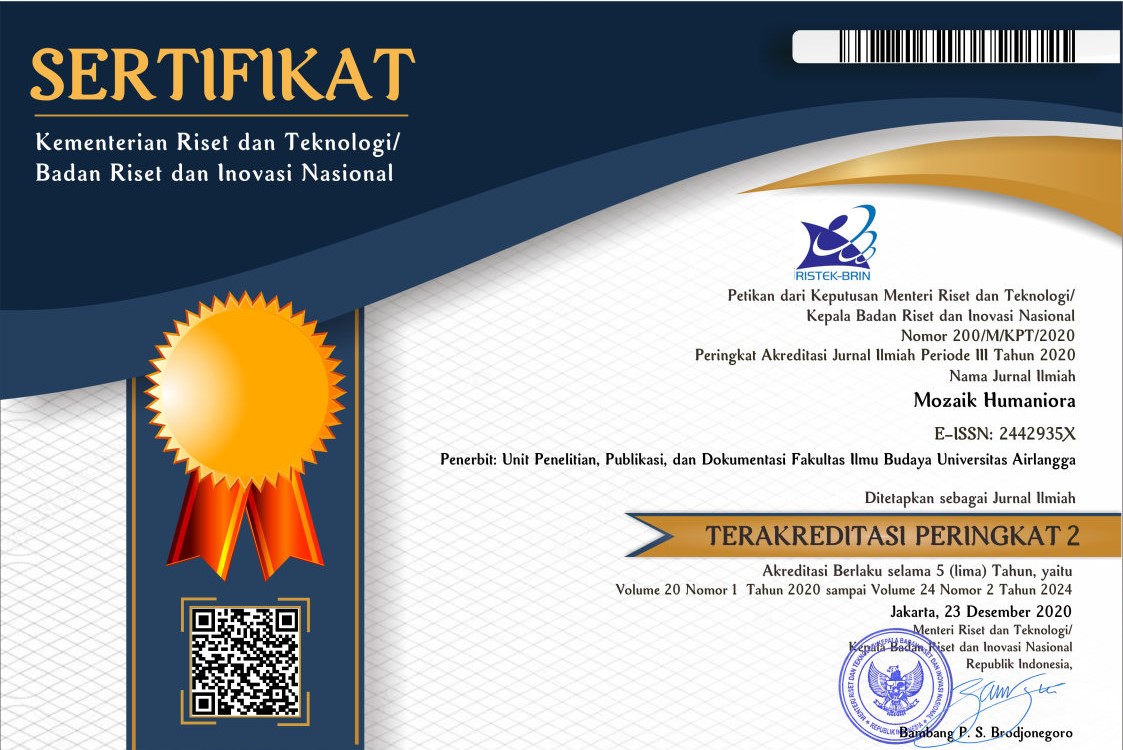The Role of Religious Institutions in Promoting Social Welfare in Indonesia
Downloads
This paper discusses religion from social anthropological point of view. Religious teachings are not seen as something sacred and transcendent, but something worldly and immanent as a source of motives of its followers while religious institution are seen as religion inspired social institutions that have their role in the society. The method used in this study is fieldwork. The data are collected though participative observation and interview. Literary study is also done to complete the data and check the data collected from the field. The result of this study shows that due to this nature, in promoting social welfare, religion through its teachings and institutions work on two levels: spiritual and practical level. Though this paper uses the Indonesian Catholic Church as an example, other religious institutions may have similar programs to participate in the process of making the world better place for everybody.
Alitto, Guy. 2015. "Reconstituting Confucianism in the Contemporary World.” In Contemporary Confucianism in Thought and Action, edited by Guy Alitto. New York: Springer.
Canda, Edward R. and Leola Dyrud Furman. 2010. Spiritual Diversity in Social Work Practice: The Heart of Helping. Oxford: Oxford University Press.
Comte, Auguste and Gertrud Lenzer. 1975. Auguste Comte and Positivism: The Essential Writings. New York: Harper & Row.
Durkheim, Emile. 1915. Elementary Forms of the Religious Life, translated by Joseph Ward Swain, New York: The Macmillan Company.
Ferris, Elizabeth. 2005. "Faith-based and Secular Humanitarian Organizations.” International Review of the Red Cross 87.
Geertz, Clifford. 1993. The Interpretation of Cultures. UK : Fontana Press.
Harmsen, Egbert. 2008. Islam, Civil Society and Social Work: Muslim Voluntary Welfare Associations in Jordan between Patronage and Empowerment. Leiden: Amsterdam University Press.
Jackson, Timothy P. 2015. Political Agape: Christian Love and Liberal Democracy. Grand Rapid: Wm. Eerdmanns Publ. Co.
Martens, K. 2002. "Mission Impossible? Defining Nongovernmental Organizations.” Voluntas 13 (4), 271-285.
Massaro, Thomas. 2012. Living Justice: Catholic Social Teaching in Actions. Maryland: Rowman and Littlefield Publisher.
Mirus, Jeffrey A. 2008. Making Sense of Society: Catholic Essays on the Human Persons, the Social Order, Government and Faith. New Hope: Urbi et Orbi Publications.
Pals, Daniel L. 2009. Introducing Religion: Reading from The Classic Theorists. New York: Oxford University Press.
Rasul, Amina. 2009. "The Role of Religion in Peace Making.” CSID 10th Annual Conference.
Ritzer, George. 2009. Contemporary Sociological Theory and Its Classical Roots: The Basics. New York : McGraw-Hill.
Scarnecchia, D. Brian and Terrence McKeegan. 2009. The Millennium Development Goals In Light of Catholic Social Teaching. New York: International Organizations Research Group.
Smock, David R. 2006. Religious Contributions to Peacemaking: When Religion Brings Peace, Not War. Washington,DC: United States Institute of Peace.
Webber, Max. 1905. The Protestant Ethics and The Spirit of Capitalism, translated by by Stpehen Kalberg, 2002, Roxbury Publ. Co.
Zastrow, Charles. 2008. Introduction to Social Work and Social Welfare: Empowering People. Thomson/Brooks/Cole.

Mozaik Humaniora is licensed under a Creative Commons Attribution-ShareAlike 4.0 International License. Both authors and Mozaik Humaniora agree with the following attribution of journal:
1. Copyright of this journal is possession of Author, by the knowledge of the Editorial Board and Journal Manager, while the moral right of the publication belongs to the author.
2. The journal allows the author(s) to retain publishing rights without restrictions
3. The legal formal aspect of journal publication accessibility refers to Creative Commons Attribution Share-Alike (CC BY-SA).
4. The Creative Commons Attribution Share-Alike (CC BY-SA) license allows re-distribution and re-use of a licensed work on the conditions that the creator is appropriately credited and that any derivative work is made available under "the same, similar or a compatible license”. Other than the conditions mentioned above, the editorial board is not responsible for copyright violation.


















